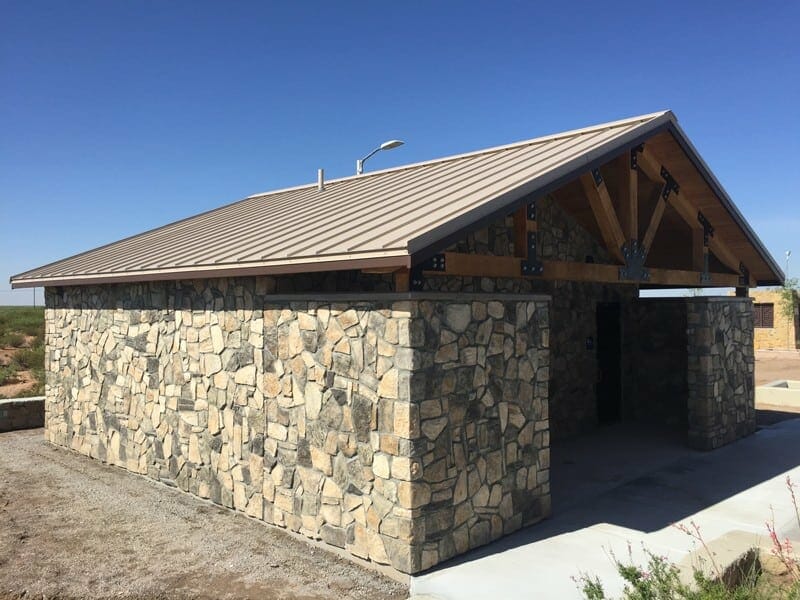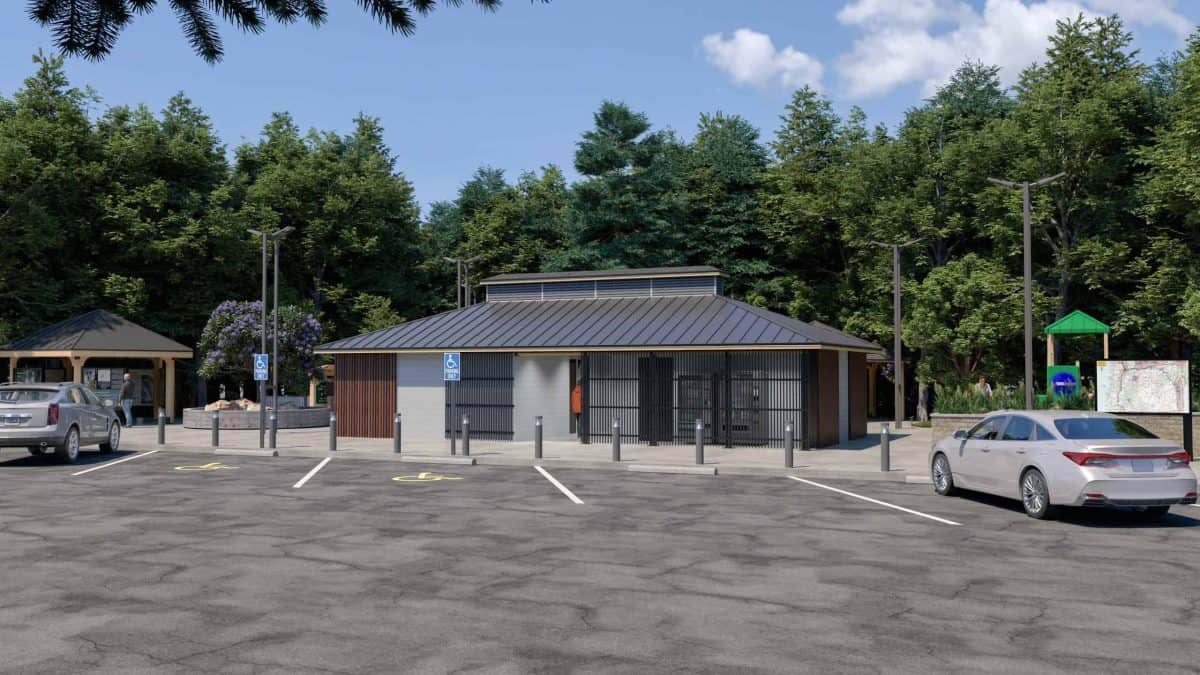A highway rest area is a critical piece of infrastructure for state highways, interstate freeways, and various routes all across the country, that represent the state, its looks, and its values.
For example, in Ashland, Oregon a welcome center rest area sits on Interstate 5 just north of the California border that welcomes travelers into Oregon. This Travel Oregon welcome center represents the state of Oregon with two beautiful buildings, along with various covered areas that give travelers a reprieve from the road.
These Department of Transportation (DOT) rest areas provide restroom structures with various configurations to accommodate the number of people who travel on that highway or interstate.
These highway rest stops often provide vending machines, drink machines, picnic tables, drinking fountains, along with welcome centers that have information about the local area, region, or state. These are great places for materials about tourism in the region, along with things for travelers to do.
Aside from the basic amenities, some DOT rest areas may also offer additional services such as fuel stations, restaurants, convenience stores, and hotels. The purpose of these rest stops is to promote driver safety by providing a place for drivers to take a break when they become fatigued or need to use the restroom.
Rest areas are often located at regular intervals along major highways or interstate highways typically every 50-100 miles. These rest stops are normally maintained by state or local transportation departments (DOT) and are funded through state and federal highway funds.
Overall, highway rest areas serve an important role in promoting driver safety and ensuring that motorists have a safe place to rest and recharge during long road trips.
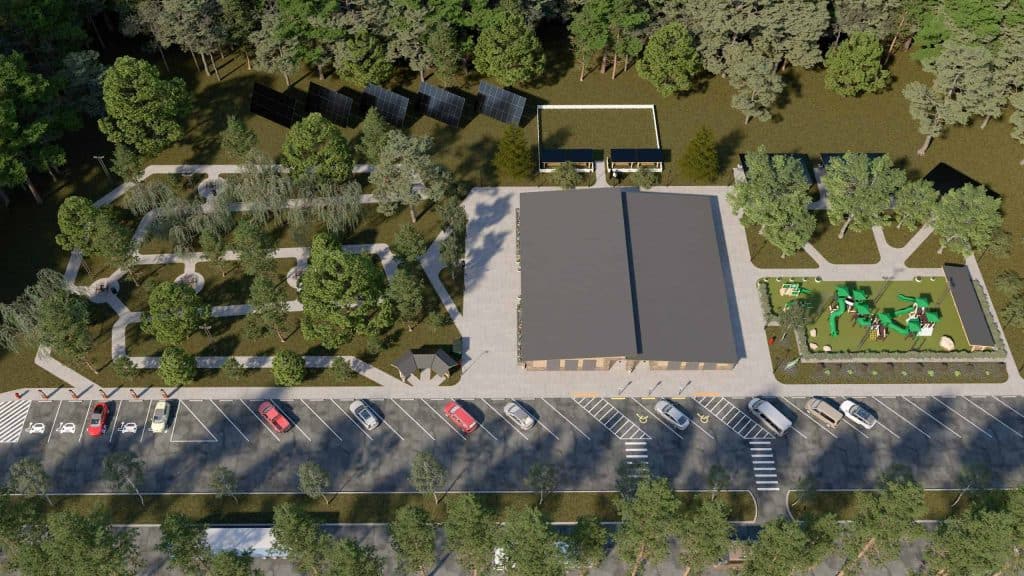
Design Considerations of Highway Rest Areas
Highway rest areas or DOT rest stops have special considerations when designing the parking lots and restroom buildings. A major consideration is the ingress and egress of vehicles that are entering the rest stop and leaving after use of the area. To ensure a safe stop, the design of the parking lot and streets that connect the rest stop to the freeway should consider the movement of many pedestrians and cars.
The needs of the travelers are another important consideration to think about when designing the restroom building.
Some traveler considerations include:
- Is there a need for a covered pavilion with picnic tables?
Picnic tables are a great resource for traveling families.
- How many ADA accessible restrooms are needed based on the total number of people expected to use the rest stop?
These numbers can be determined by reviewing the available occupancy of nearby highway restroom buildings.
- Are family restrooms going to be a part of the restroom building design?
Family restrooms are an important part of rest areas for travelers with children or disabled children and family members to use a private restroom all together for security and privacy.
- Will there be a welcome center pavilion or covered kiosk where travelers can get information about the local area or region?
A covered area is ideal for this space during the winter, during the wetter months and in the summer where people can escape the heat and sunlight.
- Will there be a pet area or dog park area set aside for people with pets to walk around?
These are all considerations to take when determining the size of the overall restroom building, the size of the parking lot, and the number of people the rest stop will service based on calculations of the number of cars that travel the highway.
At Romtec, our team of design engineers and architects have worked on a variety of rest areas and highway rest stops, welcome centers, and service areas. We cater each design to the needs of that project and the needs of the travelers along with the feedback from the DOT who will maintain the rest area.
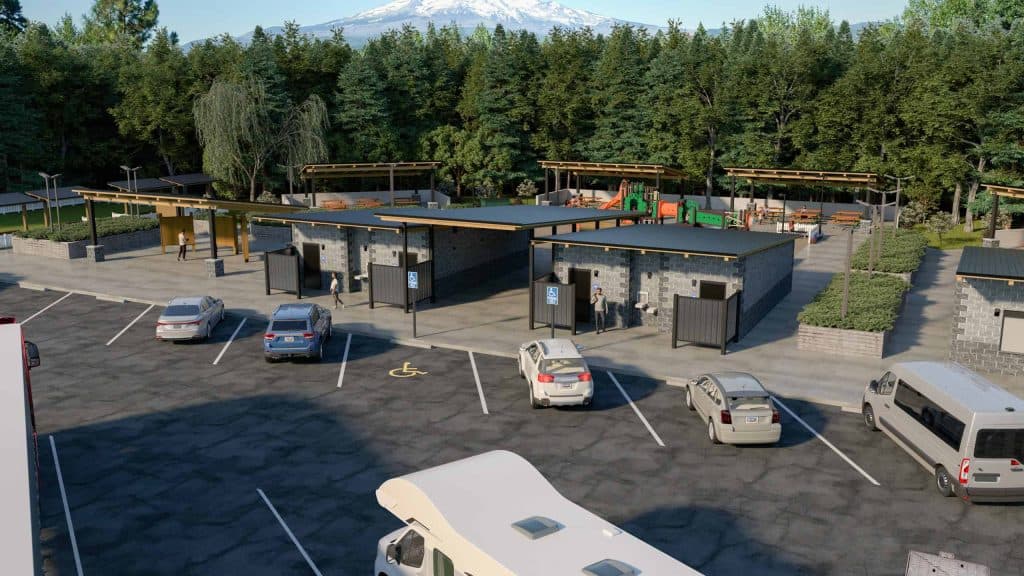
Designs to Meet the Size of the Rest Area
Romtec has created a set of designs ranging from small to extra-large rest stops to give ideas for how the space can be set up to best serve the travelers.
The small rest stop design features an information kiosk, pavilion, and restroom. The Department of Transportation in charge of the rest stop can provide information for visitors at the kiosks when they stop for a rest.
A medium size highway rest stop design includes two pavilions, a pet area with benches shaded by two single-sloped pavilions, a large restroom building, a three-sided kiosk, and a playground as a chance for small travelers to expend their energy. This type of design goes beyond the typical expectations for a rest stop and provides a restful experience for travelers needing a break.
Romtec’s large DOT rest area design features a restroom divided by a covered walkway, as well as a concession building, several picnic pavilions with tables and a covered kiosk space for visitor information. This premium level Romtec rest area design will leave your visitors wanting to come back again and again.
Finally, the extra-large highway rest area design provides a large restroom with a concession building add-on, a fenced pet area, playground, and several pavilions for the comfort of travelers.
At the core of all our designs is creating a safe space that drivers can use to rest when they need, while providing features that improve the overall rest stop experience, which promotes driver safety.
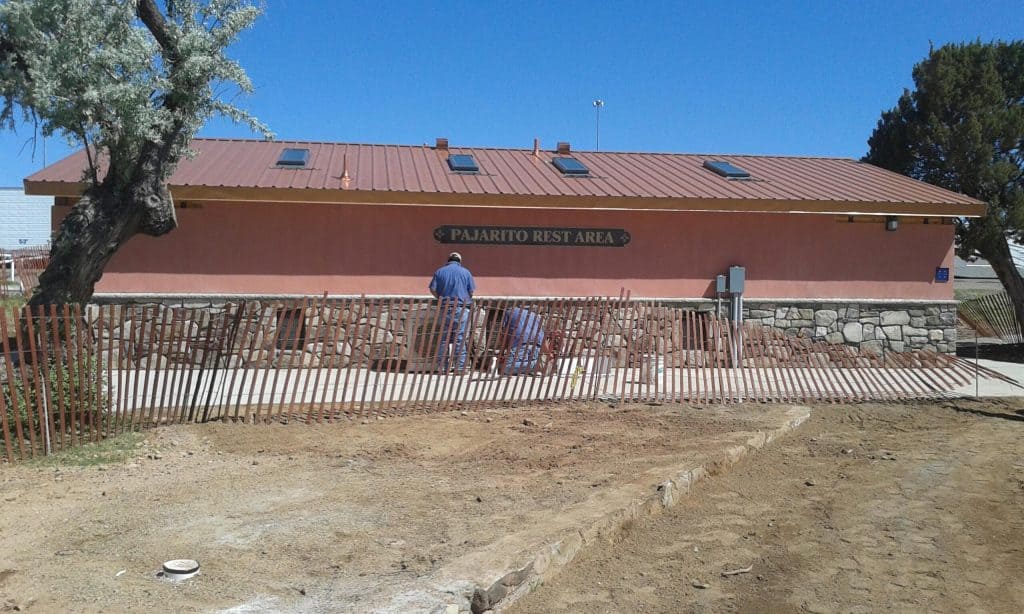
Some Examples of Romtec Rest Area Restrooms
Romtec has worked with Departments of Transportation on a variety of different rest area restrooms.
One example was the Interstate 40 rest area between Albuquerque and Santa Rosa, New Mexico. This adobe-themed rest area was designed by Romtec with red stucco that matched nearby adobe structures and stone wainscoting that matched planters and path walls. This restroom featured Southwest finishes that complement the tone and scheme of the surroundings.
Romtec provided a turnkey replacement project and installed a conventional restroom building for a well-traveled rest area near Las Cruces, New Mexico as well. The site offers a breathtaking view overlooking Las Cruces and the Organ Mountains. The siding of the building uses a dressed fieldstone exterior with dark earthy colors matching natural themes in the area. This project was part of a series of upgrades the New Mexico DOT was making to provide high quality rest areas.
At Romtec we strive to design, supply, and build a highway rest area restroom building and various other structures like pavilions or kiosks that will improve the overall experience of the traveler needing to get some rest and relaxation from the road.
This critical piece of infrastructure represents the state and its values that provide a welcoming experience for all travelers.
